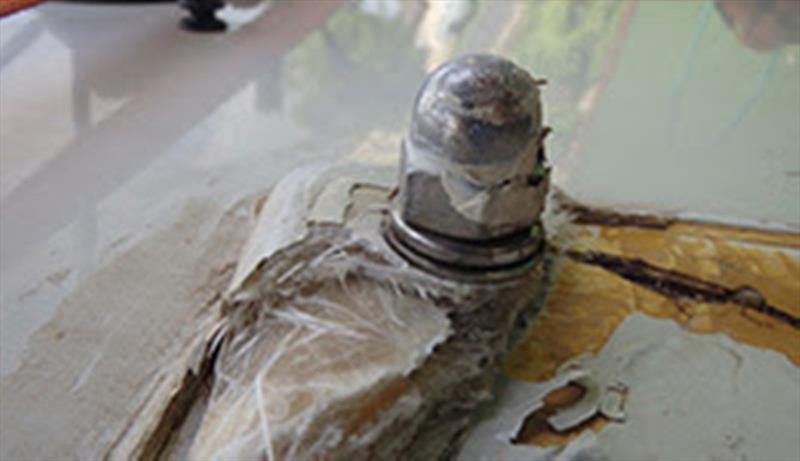
Engine pod breaks from transom - incident review
by Maritime Safety Victoria 21 Jan 2019 09:03 UTC

Engine pod breaks from transom © Maritime Safety Victoria
Here we review an incident that highlights the importance of thorough boat maintenance.
A couple of keen fishers were heading home after a morning on the water when the outboard motor pod failed, slewing the motor to the starboard side and spinning the boat 180 degrees.
One of the men attempted to cut the motor loose while waves were slopping over the transom, where the engine was still partially attached.
They said the incident happened off Werribee at about 7.30am in daylight, while they were travelling at about 30knots in 1m seas.
One man called 000 and spoke to the police, but the boaters were unable to provide accurate GPS co-ordinates - so they were asked to activate their EPIRB to give an exact location for a helicopter to target.
They also put on lifejackets and let off some rocket flares and hand flares because they had seen some boats nearby - but no one came over.
Unfortunately, they had lost power to their VHF radio when they disconnected the engine battery because it was sending off sparks. They tried their 27Mhz radio (powered from the port side house battery) but had trouble passing on their location to a boat that did respond.
The boat was eventually towed back to the boat ramp, half-attached engine pod and all.
The boat owner said he'd bought the craft four years earlier and had noticed some cracks in the transom, but they did not appear serious.
This incident highlights the importance or regular inspections of hull and fittings on board vessels. In this case the bolts securing the pod to the transom were fastened with washers that may have been undersized.
Over time, the washers had crushed the flange on the fibreglass engine pod and this led to a catastrophic failure while under way. Regular checks may prevent failures like this occurring by identifying wear and tear early.
Maritime Safety Victoria tips
When checking your pod:
- Look for signs of fibreglass laminate crushing
- Look for signs of water ingress around bolts
- Routinely remove a bolt to check state of fibreglass for water intrusion and to check compression.
When fitting an engine pod:
- Good practice is to have a non-crushable core in the GRP laminate to drill attachment holes through. Core materials used should be crush resistant and compatible with marine construction standards and practice
- Use large washers to spread the crushing load, not ones similar in diameter to the bolt heads.
Read more about boat maintenance